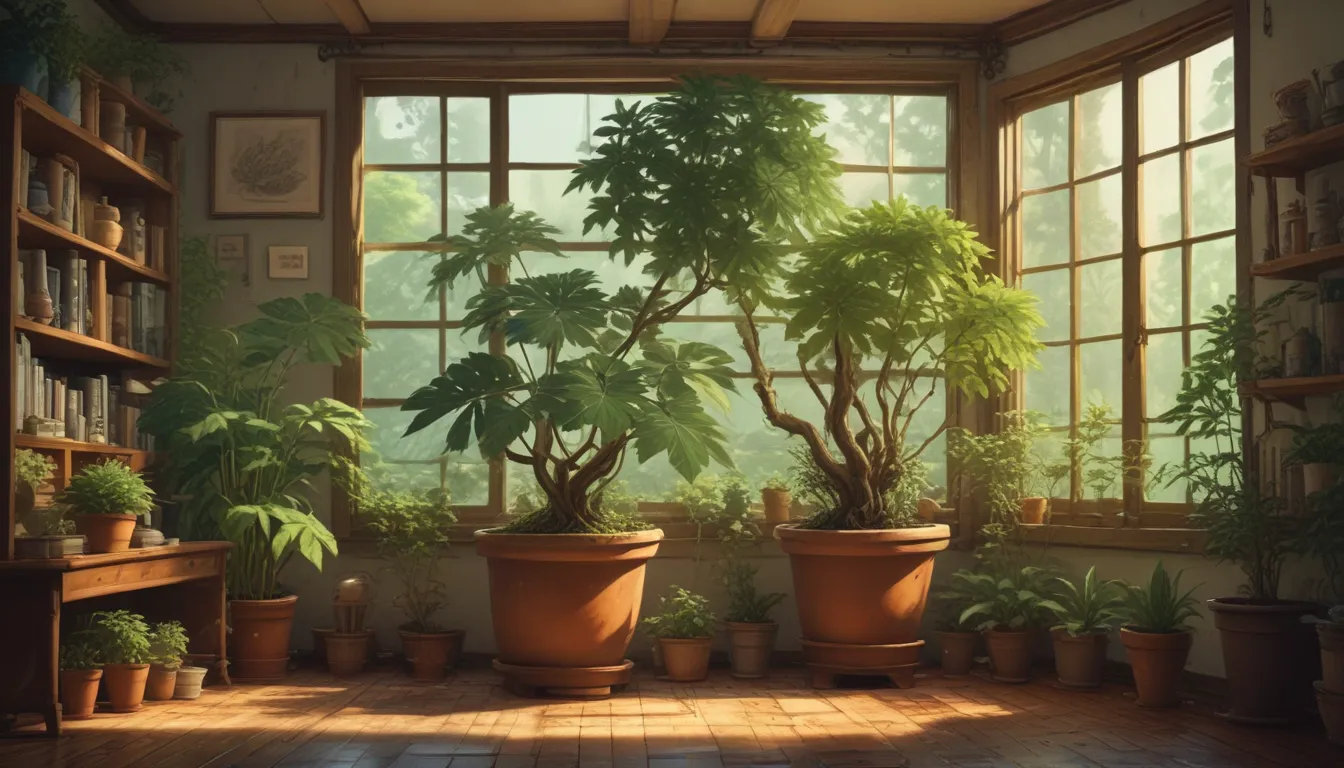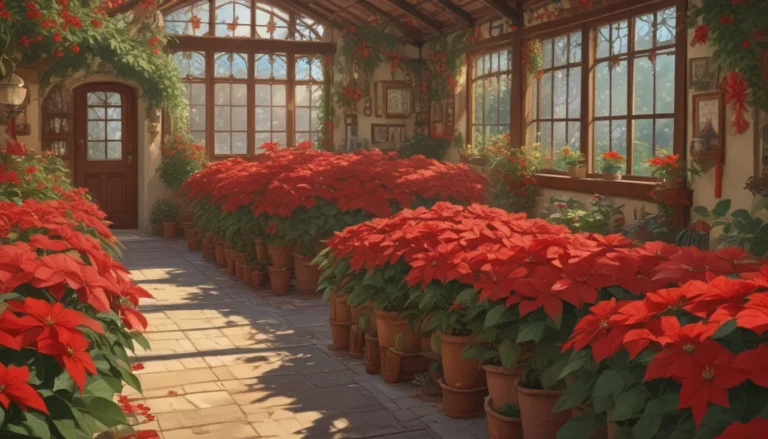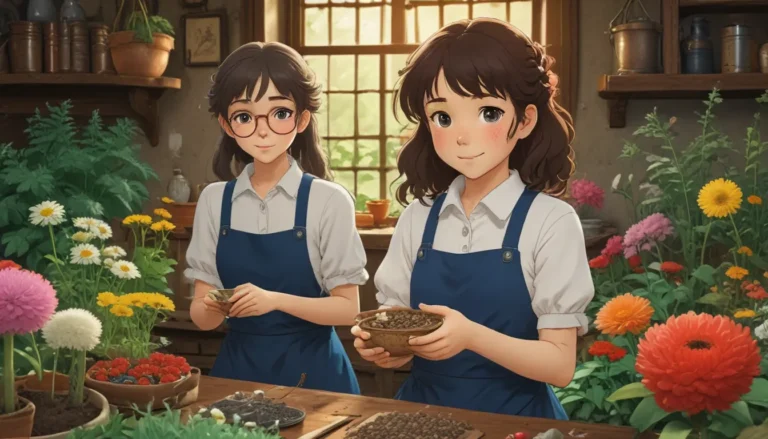The Comprehensive Guide to Growing and Caring for False Aralia Houseplants

Getting to Know Plerandra Elegantissima
Have you ever come across a houseplant that is so stunningly beautiful that you just have to have it, even if it requires a bit of extra effort to keep it happy? False aralia is one of those plants.
With its elegant foliage that resembles dark lace or tiny feathers, it’s no surprise that it is instantly recognizable and often draws comments from admirers. The botanical name of this plant even includes the word “elegant,” emphasizing its graceful appearance.
While false aralia may sometimes be mistaken for marijuana or a finely serrated Japanese maple, it has a unique look all its own that sets it apart.
What You’ll Learn
Are you ready to dive into the world of false aralia and learn how to successfully grow and care for this captivating plant? This comprehensive guide will cover everything you need to know, including:
- What Is False Aralia?
- Cultivation and History
- Propagation
- How to Grow
- Growing Tips
- Pruning and Maintenance
- Cultivars to Select
- Managing Pests and Disease
- Best Uses
- Quick Reference Growing Guide
Don’t wait any longer, let’s explore the fascinating world of false aralia and discover how to bring this tropical beauty into your home!
What Is False Aralia?
Plerandra elegantissima is a distinct plant with leaves that have heavily toothed edges and come in various colors, including copper, burgundy, or medium green, depending on the cultivar and light exposure.
Native to New Caledonia, false aralia is also known by names such as threadleaf, spider, or finger aralia. Despite being referred to as “false,” the plant’s unique beauty and foliage set it apart as a lovely addition to any indoor space.
While this plant is predominantly grown as a houseplant in the US, it can thrive outdoors in specific USDA hardiness zones, where it may grow much larger than when grown indoors.
Cultivation and History
False aralia was introduced to the Western world in 1873 at the Chelsea Flower Show in London by horticulturist John Gould Veitch. Over the years, this plant has been classified under various genera but is currently grouped under Plerandra.
Sadly, despite its popularity as a houseplant, false aralia faces extinction in its native New Caledonia due to habitat loss, highlighting the importance of conservation efforts.
Propagation
While false aralia can be grown from seeds or cuttings, these methods may not always be reliable. Most individuals prefer to purchase mature plants for immediate enjoyment.
From Seed
If you decide to grow false aralia from seeds, you can extract them from fleshy fruits or purchase them from a reputable source. Soak the seeds in warm water, and sow them in a seed-starting medium until they germinate.
From Cuttings
Softwood cuttings are ideal for propagating false aralia. Take a cutting from a mature plant, apply rooting hormone powder, and plant it in a suitable medium to encourage root growth.
From Seedlings/Transplanting
For the easiest option, consider purchasing a false aralia plant from a nursery. Transplant it into a decorative pot with proper soil for optimal growth.
How to Grow False Aralia Plants
Finding the right balance of light, humidity, and water is crucial for the successful growth of false aralia plants. Provide bright, indirect light, maintain high humidity levels, and water the plant only when the soil is dry to the touch.
False aralia is sensitive to temperature fluctuations and low humidity, so ensure your plant is kept in a warm, humid environment for optimal growth. Regular feeding with a diluted houseplant-specific fertilizer is recommended to support healthy foliage.
Growing Tips
Here are some essential tips for growing false aralia plants successfully:
- Place in bright, indirect light
- Maintain high humidity
- Water when the top inch of soil is dry
- Avoid temperatures below 65°F
Pruning and Maintenance
False aralia is a slow-growing plant that requires minimal pruning and repotting. Upgrade the pot size every three years, and remove dead or yellowing leaves as needed to maintain a healthy appearance.
Cultivars to Select
While there aren’t a wide variety of cultivars available, some unique variations of false aralia include:
- Bianca
- Galaxy
- Gold Crest
- Olympia
- Variegated Galaxy
Each cultivar offers distinct leaf colors and patterns, adding diversity to your indoor plant collection.
Managing Pests and Disease
False aralia plants are susceptible to pests such as aphids, mealybugs, and spider mites, as well as diseases like root rot. Monitoring your plant regularly for signs of infestations and diseases is essential to maintaining its health.
Insects
Aphids, mealybugs, and spider mites can cause damage to your false aralia plant if left untreated. Identify and address these pest problems promptly to prevent further harm.
Disease
Root rot is a common disease that can affect false aralia plants, caused by overwatering or fungal pathogens. Treat root rot by removing affected roots, repotting the plant, and applying a biofungicide to the soil.
Best Uses
False aralia can be grown as an indoor tree or a compact bush, adding an elegant touch to any room. Whether grown as a single specimen or grouped together for a fuller look, false aralia plants are versatile and visually striking.
Conclusion
False aralia plants may require a bit of extra care and attention compared to other houseplants, but their unique beauty and graceful foliage make them well worth the effort. By following the tips and guidelines in this comprehensive guide, you can successfully grow and care for false aralia plants in your home.
If you encounter any challenges or have questions along the way, don’t hesitate to reach out for assistance. Remember, the journey of caring for houseplants is a rewarding one, filled with beauty and tranquility.
So go ahead, embrace the world of false aralia plants and create a lush indoor oasis that brings joy and serenity to your living space. Happy gardening!





